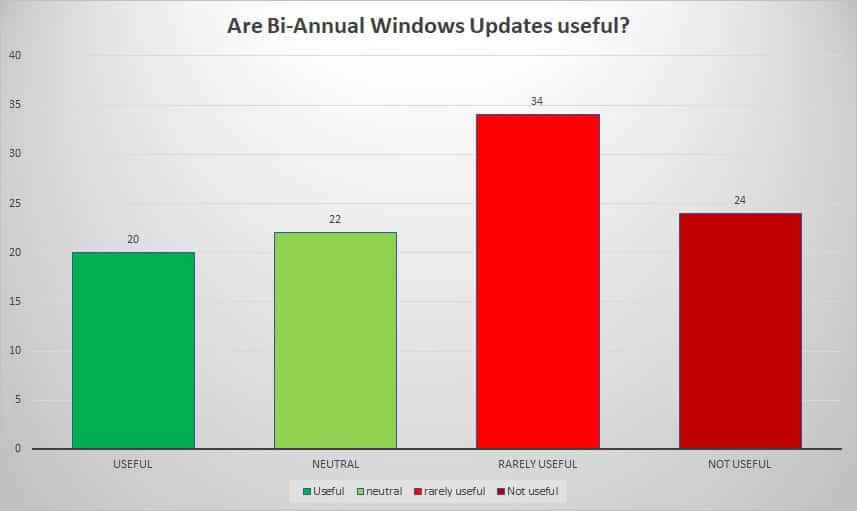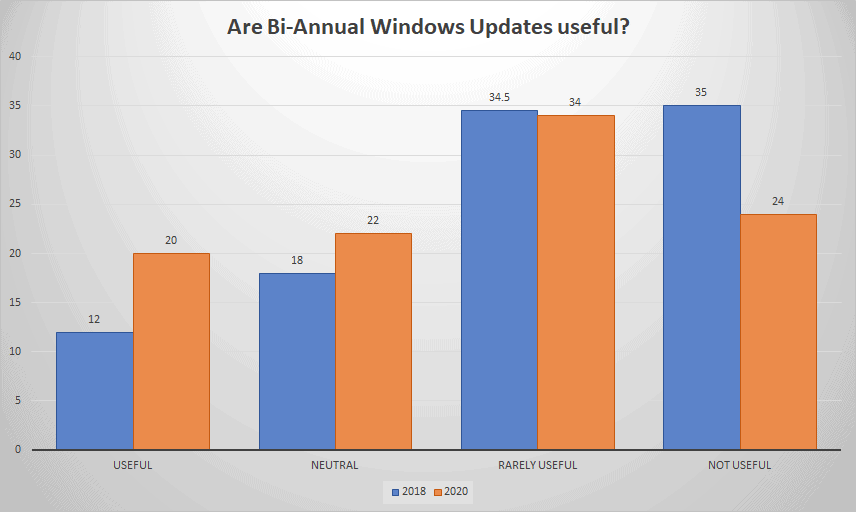The majority of IT professionals think Bi-Annual Windows 10 Updates are rarely if ever useful

If it was up to IT professionals we would all still be running Windows 7 at work, with the majority unhappy with Microsoft’s Windows as a Service regime of regular and forced Windows 10 updates.
A survey by Susan Bradley, a computer network and security consultant who moderates the PatchMangement.org mailing list, where IT administrators discuss updates and exchange information with nearly 500 respondents found 58% thought bi-annual Windows 10 updates were not useful (24%) or rarely useful (34%).
Only 20% thought they were useful and a full 22% were neutral on the topic.
IT admins accused the updates of rarely improving things, but often causing issues.
“It’s mostly bells, whistles and window-dressing,” one IT admin said. “It seems like no fundamental problems are tackled. Although updates DO every now and then cause new problems in fundamental functionality. Looks like there’s at least some scratching done on the fundamental surface – ((but)) without explanation.”
They felt the updates did not address fundamental issues.
“I understand the concept of WaaS, and the ability to upgrade the OS without a wipe/re-install is a good concept,” one of those polled said. “((But)) let’s concentrate more on useful features, like an upgraded File Explorer, a Start menu that always works, and context-sensitive (and useful) help, and less on, ‘It’s time to release a new feature update, whether it has any useful new features or not.'”
Another complained:
“Don’t have a clue why they think some of the new features might be worth our time, or even theirs.”
Microsoft does, however, appear to be winning over IT professionals, if very slowly.
A 2018 survey found nearly 70% thought Windows Updates were not useful (35%) or rarely useful (34.5%). About 12% called the upgrades useful to some degree, while around 18% were unable to decide one way or the other.
The goal of Microsoft’s efforts is of course to prevent the fragmentation we are in the early 2000’s when we had a large number of Windows users on legacy platforms, preventing Microsoft from effectively leveraging their platform.
Do our readers think Windows as a Service is underrated? Let us know below.
via Computerworld
Read our disclosure page to find out how can you help MSPoweruser sustain the editorial team Read more





User forum
0 messages